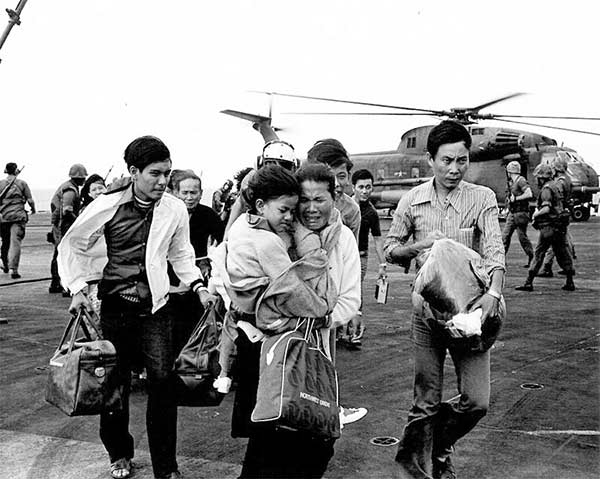Flickr / CC-BY-SA-3.0 / GFDL
1 – The Fall of Saigon Signals the End of the Vietnam War
The Fall of Saigon was the capture of Saigon, the capital of South Vietnam, by the People’s Army of Vietnam and the National Liberation Front of South Vietnam (or Việt Cộng) on April 30, 1975.
The event marked the end of the Vietnam War and the start of a transition period to the formal reunification of Vietnam under the Socialist Republic.
North Vietnamese forces began their final attack on Saigon on April 29, 1975, with the Army of the Republic of Vietnam suffering heavy artillery bombardment.
This bombardment at the Tân Sơn Nhất Airport killed the last two American servicemen to die in Vietnam, Charles McMahon and Darwin Judge.
The next day, North Vietnamese troops had raised their flag over the South Vietnamese presidential palace.
The South Vietnamese government capitulated shortly after. The city was then renamed Hồ Chí Minh City.
The capture of the city was preceded by the evacuation of almost all the American civilian and military personnel in Saigon, along with tens of thousands of South Vietnamese civilians associated with the southern regime.
The evacuation culminated in Operation Frequent Wind, the largest helicopter evacuation in history.
2 – The Miami Showband Killings
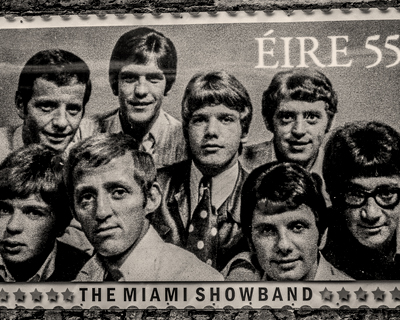
This was an attack by the Ulster Volunteer Force, a loyalist paramilitary group, on July 31, 1975, in County Down, Northern Ireland.
Five people were killed, including three members of The Miami Showband, one of Ireland’s most popular cabaret bands.
The band was traveling home to Dublin late at night after a performance. Their minibus was stopped at what appeared to be a military checkpoint, where gunmen in British Army uniforms ordered them to line up by the roadside.
At least four of the gunmen were serving soldiers from the British Army’s Ulster Defence Regiment but, unbeknownst to the band, all were members of the UVF.
While two of the gunmen were hiding a time bomb on the minibus, it exploded prematurely and killed them. The other gunmen then opened fire on the dazed band members, killing three and wounding two.
It is believed the bomb was meant to explode en route, killing the band and framing them as IRA bomb-smugglers, and possibly leading to stricter security measures at the border.
Two serving British soldiers and one former British soldier were found guilty of the murders and received life sentences; they were released in 1998.
There are also allegations that British military intelligence agents were involved.
3 – Khmer Rouge Captures Phnom Penh
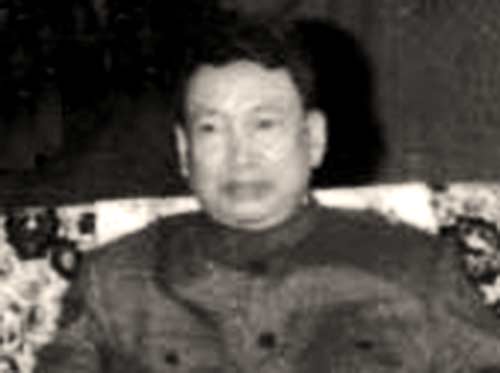
The fall of Phnom Penh was preceded by Operation Eagle Pull, which was the United States military air evacuation of Phnom Penh, Cambodia, on April 12, 1975.
At the beginning of April 1975, Phnom Penh, was one of the last remaining strongholds of the Khmer Republic and was surrounded by the Khmer Rouge, making it totally dependent on aerial resupply through Pochentong Airport.
With a Khmer Rouge victory imminent, the US government made contingency plans for the evacuation of US nationals and allied Cambodians by helicopter to ships in the Gulf of Thailand.
Operation Eagle Pull took place on the morning of April 12 and was a tactical success carried out without any loss of life. Five days later the Khmer Republic collapsed and the Khmer Rouge occupied Phnom Penh.
On April 17, the Khmer Rouge entered Phnom Penh bringing the Cambodian Civil War to an end.
Top officials of the Khmer Republic Government, who refused to evacuate, were executed while resisting troops in the city were disarmed, taken to the Olympic Stadium and also executed.
4 – Muhammad Ali Defeats Joe Frazier in ‘The Thrilla in Manila’ – The Last of Their Fight Trilogy
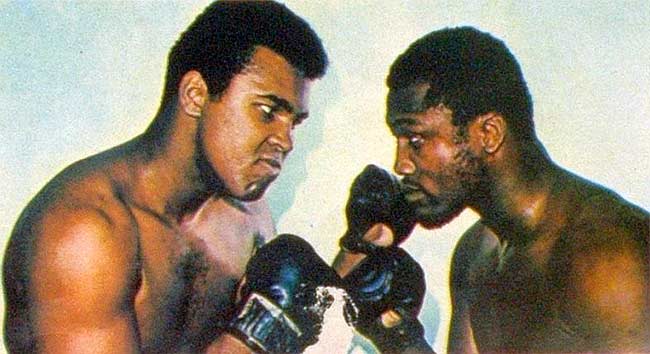
The Thrilla in Manila was the third and final boxing match between Muhammad Ali and Joe Frazier.
It was contested on October 1, 1975, for the heavyweight championship of the world at the Philippine Coliseum in Cubao, Quezon City, Philippines. The venue was renamed from Araneta Coliseum, specifically for the match.
Ali won by technical knockout after Frazier’s chief second, Eddie Futch, conceded the fight prior to the 15th round.
Unknown to Frazier’s corner, at the same time, Ali had instructed his cornerman, Angelo Dundee, to cut his gloves off, but he ignored him.
Ali was so exhausted he could not muster the strength to celebrate, with a stool having to be brought into the ring for him to try and come round. Ali would later claim that this was the closest to dying he had ever been.
The ringside judges had Ali ahead by a comfortable margin but the ringside press had the fight scored much closer, with the Associated Press had the fight even after 14 rounds.
The contest’s name is derived from the frequent rhyming boast made by Ali that the fight would be a “killa and a thrilla and a chilla when I get that gorilla in Manila.”
The bout is consistently ranked as one of the best in the sport’s history and was the culmination of a three-bout rivalry between the two fighters that Ali won, 2–1.
Another legacy of this fight was its pioneering use of communication technology.
HBO became the first television network in history to deliver a continuous signal via satellite to broadcast the bout, transforming cable television from a re-transmitter to a program provider.
5 – US Teamsters President Jimmy Hoffa Famously Disappears
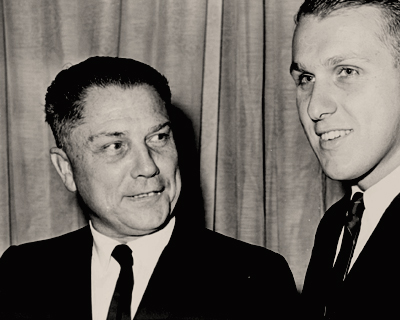
James “Jimmy” Hoffa (above left) was an American labor union leader and author who served as the President of the International Brotherhood of Teamsters union from 1958 until 1971.
Hoffa disappeared sometime after 2:45 pm on July 30, 1975, from the parking lot of the Machus Red Fox Restaurant in Bloomfield Township, an affluent suburb of Detroit.
According to what he had told others, he believed he was to meet there with two Mafia leaders: Anthony Giacalone and Anthony Provenzano. Provenzano was also a union leader with the Teamsters in New Jersey.
Hoffa had been waiting nearly 30 minutes from 2 pm, getting annoyed, he called his wife and said that he was going to wait a few more minutes before giving up.
This was the last time that she ever spoke with her husband.
Hoffa was last seen by a truck driver who claimed to have seen Hoffa in a maroon 1975 Mercury Marquis Brougham that pulled out of the restaurant parking lot.
The truck driver pulled up next to the car and recognized Hoffa sitting in the backseat.
When Hoffa did not return home that evening, his wife reported him missing. Police found Hoffa’s dark green 1974 Pontiac Grand Ville, unlocked, at the restaurant, but there was no sign of Hoffa.
Extensive investigations into the disappearance began immediately and continued over the next several years by numerous law enforcement agencies, including the FBI.
The investigations did not conclusively determine Hoffa’s fate. For their part, Giacalone and Provenzano were found not to have been near the restaurant that afternoon, and each denied to have scheduled a meeting with Hoffa.
Hoffa was declared legally dead, and a death certificate was issued, on July 30, 1982, seven years after his disappearance.
His disappearance has given rise to many rumors and theories as to what happened to him.
6 – Two Assassination Attempts on US President Gerald Ford
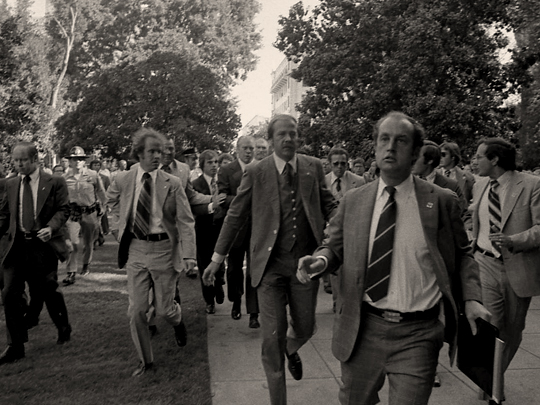
On September 5, 1975, Lynette “Squeaky” Fromme, a Charles Manson Family cult member, attempted to kill President of the United States Gerald Ford in Sacramento, California.
She wanted to make a statement to people who refused to halt environmental pollution and its effects on Air, Trees, Water, and Animals.
Although Fromme stood at little more than an arm’s length from Ford in the public grounds of the California State Capitol building, her gun failed to fire and no one was injured.
After the assassination attempt, Ford continued to walk to the California statehouse, where he met with California Governor Jerry Brown.
For her crime, Fromme spent 34 years in prison and was released on August 14, 2009.
The Gerald R. Ford Presidential Museum in Grand Rapids, Michigan, later received the M1911 pistol used in the assassination attempt as a gift, and the gun was put on display.
Sara Jane Moore’s assassination attempt took place in San Francisco on September 22, 1975, just 17 days after Lynette “Squeaky” Fromme’s attempt.
She was about 40 feet away from President Ford when she fired a single shot at him.
Moore was using a gun she had bought in haste that morning and did not know the sights were six inches off the point-of-impact at that distance and she narrowly missed.
After realizing she had missed, she raised her arm again, and Oliver Sipple, a Marine no longer on active duty, dived towards her, knocking her arm, and perhaps saving President Ford’s life.
Moore was given a life sentence for the attempted assassination and was released from prison on December 31, 2007, after serving 32 years.
